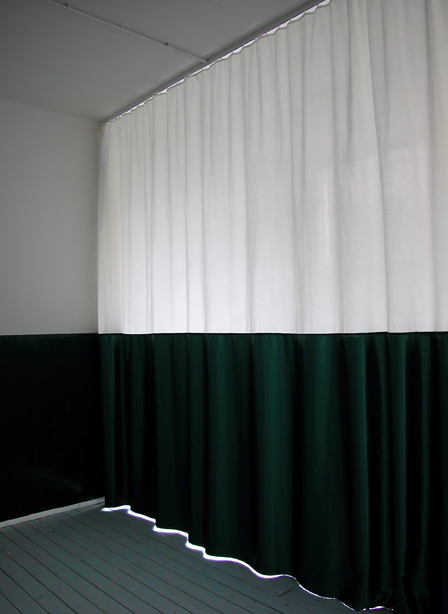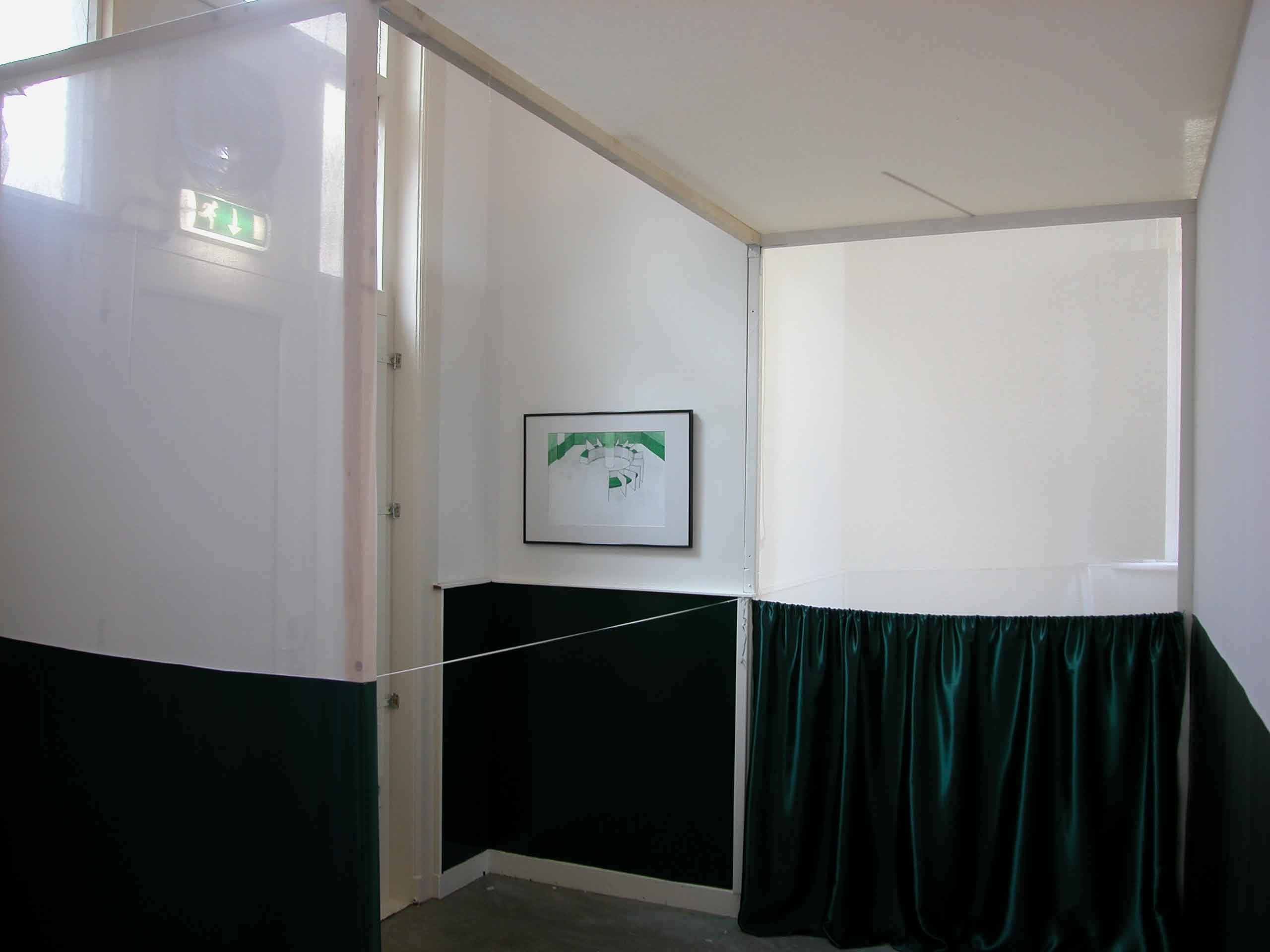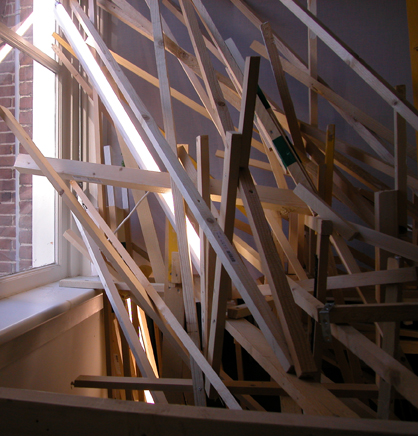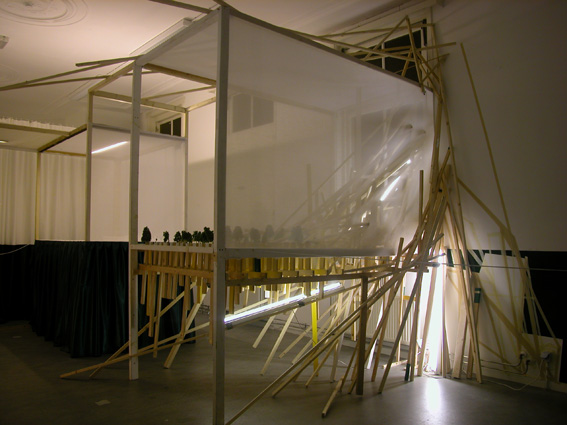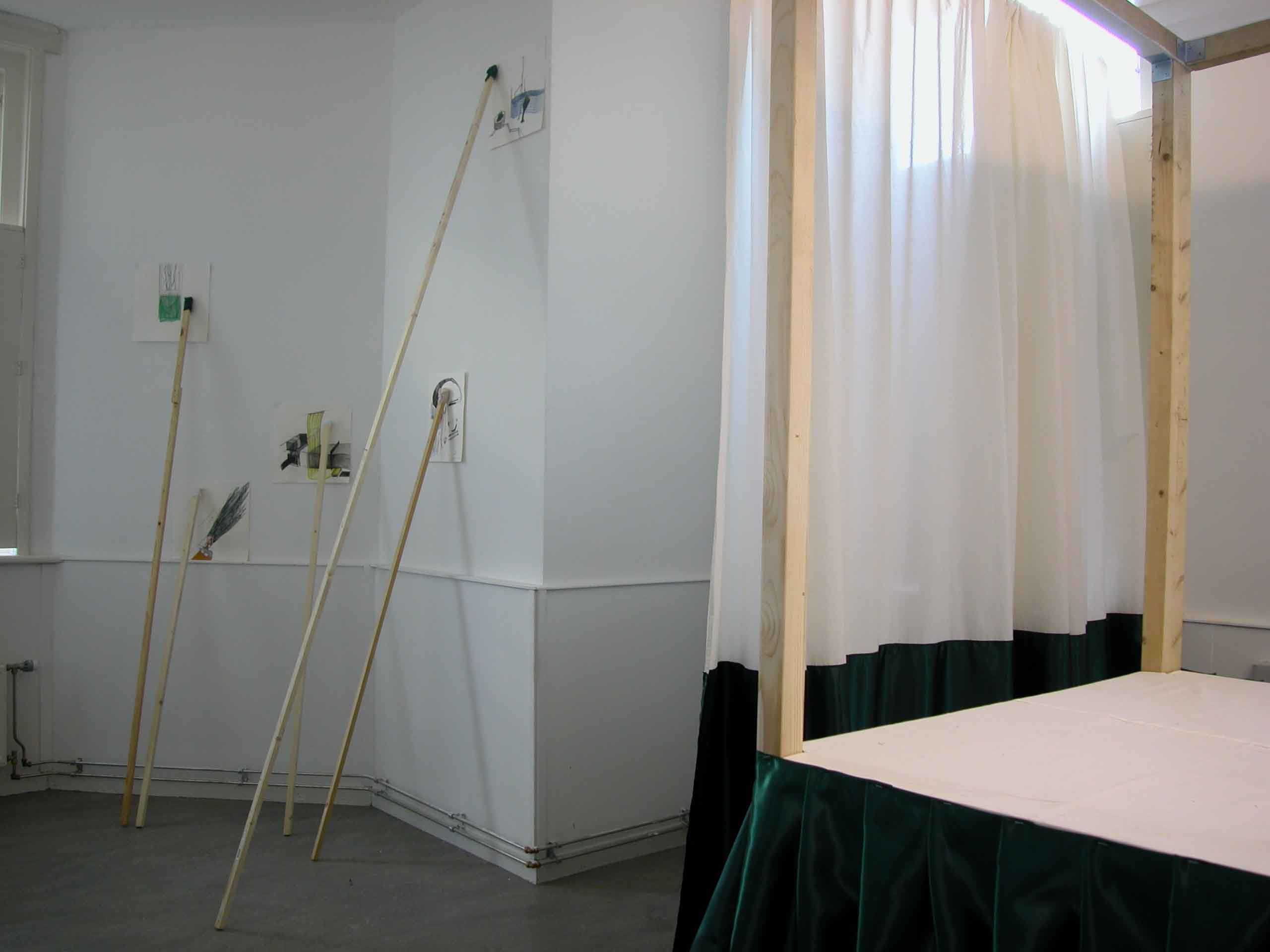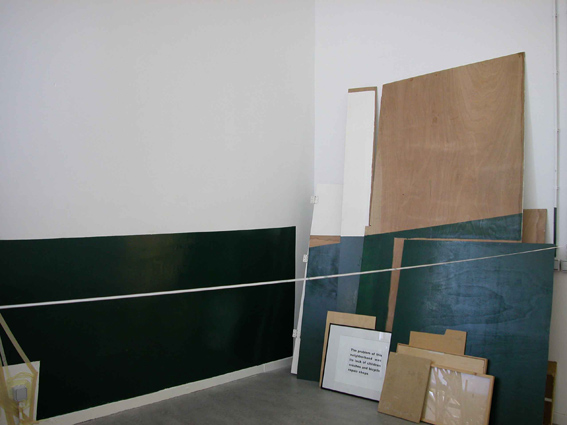What We Thought Was a Wall Turned Out to Be a Curtain
2004
Medium: Wood, fabric
Dimensions: Various
Location: Het Wilde Weten, Rotterdam, the Netherlands
What we thought was a wall turned out to be a curtain. The wall disappeared but a stronger wall remained, the one that exists in our minds – a transparent veil you can’t actually see through, the wall that turns into a curtain, the curtain that is sewn shut on both sides. This piece posed questions such as how much can one really see on the other side, and how much of this is what one wants to see? Can I face my image of the other side being destroyed? This work deals with the human body placed in new surroundings, and the relation of human beings to their lived spaces. It is concerned with how human beings adapt their surroundings to themselves, with what happens to them during this process, and how the body itself changes and becomes influenced by its surroundings.
To approach this theme, I put these questions in the context of Eastern and Western Europe, and of what happened when the old borders disappeared and the new ones emerged. To me, the East–West metaphor stands for how we tend to perceive the world only from our viewpoint, and try to fit everything we see and experience into our patterns of thinking. Meanwhile, each side changes constantly and dramatically, be it in respect of people, architecture, or their respective social and political situations.
The form of this installation showed the coexistence of order and chaos, the façade and what is hidden behind it. The wooden constructions demonstrated both of these energies and the tension between them.
